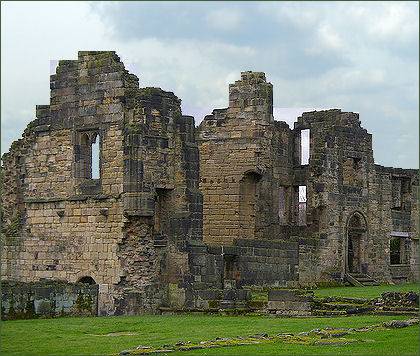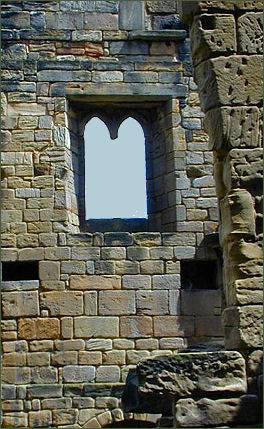Monk Breton Priory
OS grid reference:- SE 374 066
 Monk Bretton Priory, a Scheduled Ancient Monument, is situated in the village of Lundwood, in Barnsley.
Monk Bretton Priory, a Scheduled Ancient Monument, is situated in the village of Lundwood, in Barnsley.
 The priory was founded in 1154 as the Priory of St. Mary Magdelene of Lund by Adam Fitswane, a local landowner. It was a daughter house of St Johns Priory for Cluniac monks, founded by Ilbert de Lacy near Pontefract Castle.
The priory was founded in 1154 as the Priory of St. Mary Magdelene of Lund by Adam Fitswane, a local landowner. It was a daughter house of St Johns Priory for Cluniac monks, founded by Ilbert de Lacy near Pontefract Castle.
Eventually the priory adopted the name of Adam fitz Swain de Bretton, whose family owned much of the land in the area and who also founded the Priory, to become known as Monk Bretton Priory.
Monk Breton Priory belonged to the French order of Cluny, which originated in 910 AD with the foundation of the abbey of Cluny in Burgundy. A reforming offshoot of the Benedictine order, Cluniac monks followed the sixth century Rule of St Benedict and did not participate in conventional manual labour that had previously formed a component of monastic life. The order occupied various sites between Wakefield and Rotherham. It was due to the situation of the Priory that Barnsley grew to be a market town.
The priory owned properties across South Yorkshire, with rights over five parish churches, and worked coal and ironstone in the Barnsley area. Bitter quarrels broke out between Monk Breton Priory and St Johns Priory at Pontefract, as the latter attempted to retain direct control of Monk Bretton. The dispute was only resolved in 1281, when Monk Bretton seceded from the Cluniac Order and became a Benedictine house.
The monastery was disolved by King Henry VIII on 30 November 1538. Following the Dissolution of the Monasteries, the priory was plundered for building materials, the north aisle of the church was dismantled and reconstructed as the parish church of Wentworth. The site passed into the ownership of the Blithman family. In 1580 it was sold to George Talbot, 6th Earl of Shrewsbury who gave the estate to his fourth son Henry on his marriage to Elizabeth Rayner.
The site has an unusually well-marked ground plan, an almost complete west range and a gatehouse which dates back to the fifteenth century. Little of the church remains, with the exception of the south transept. The remains of the priory kitchen and bakehouse stand to the south of the refectory. Nearby are the remains of two fishpods. Excavations of the church and cloister were carried out in the 1920s which were published by the Yorkshire Archaeological Society.
The site is now in the care of English Heritage, admission is free.
Abbeys and Churches of Yorkshire
Historic Buildings of Yorkshire
